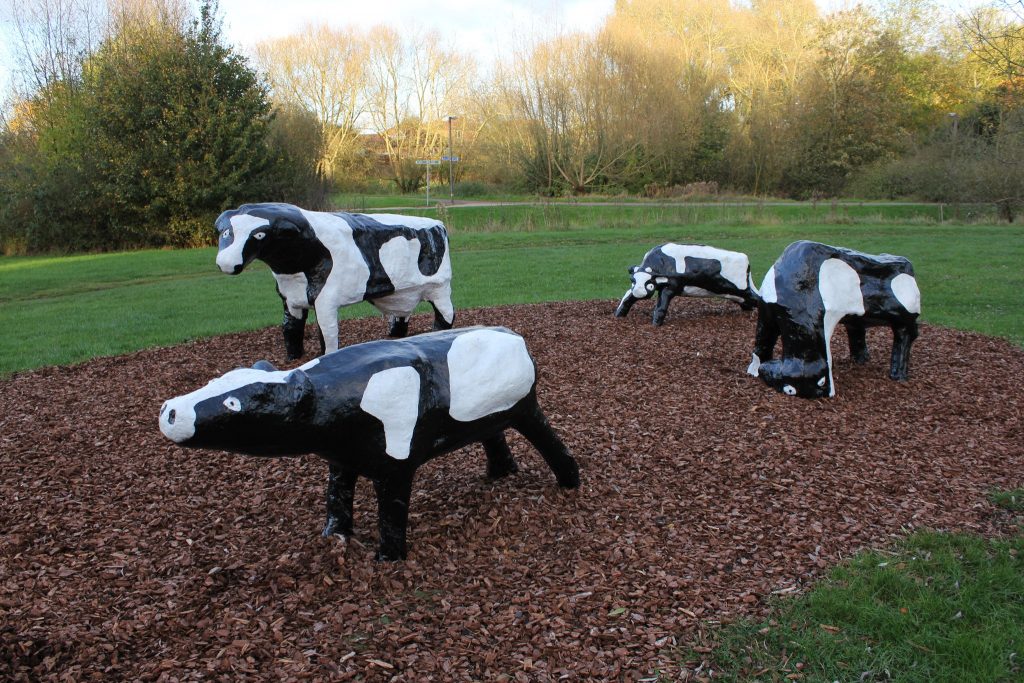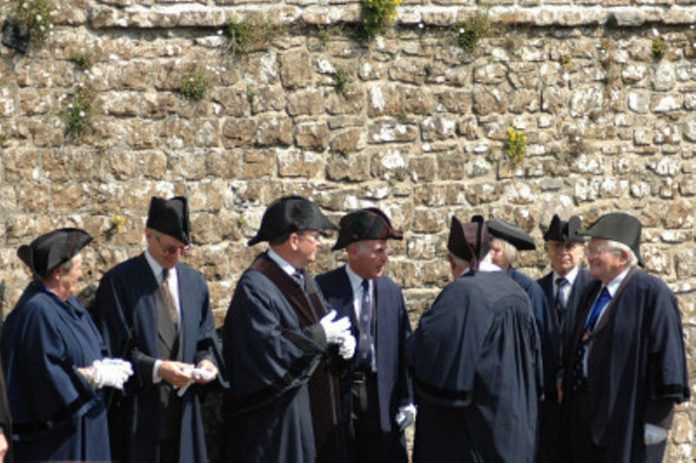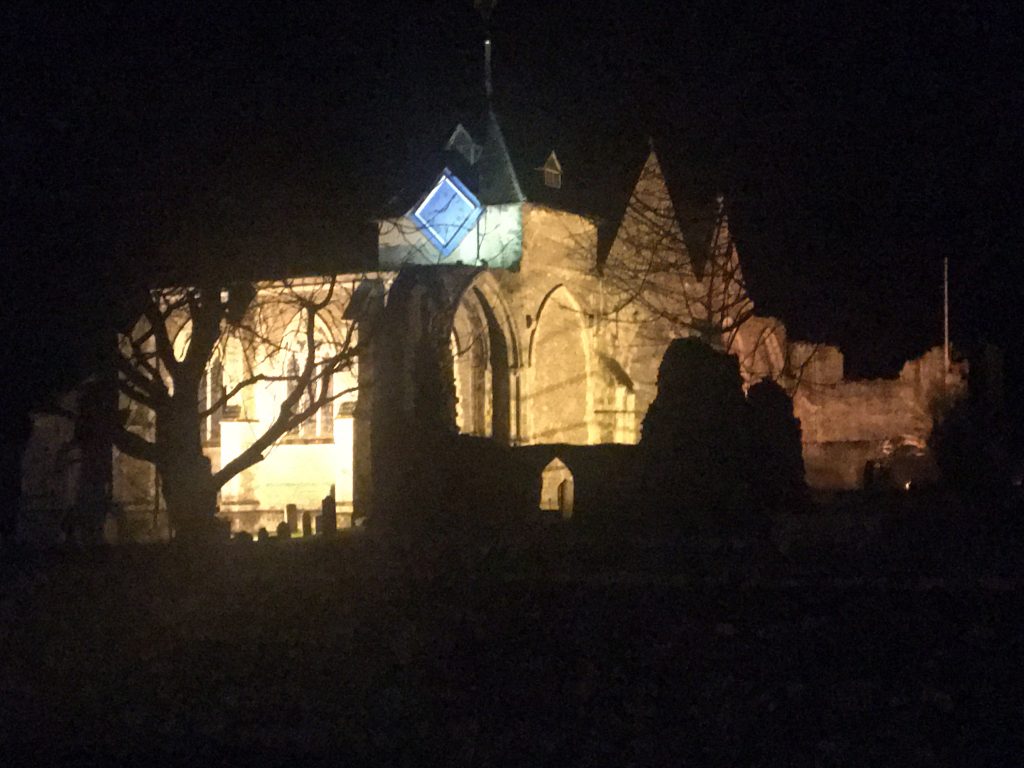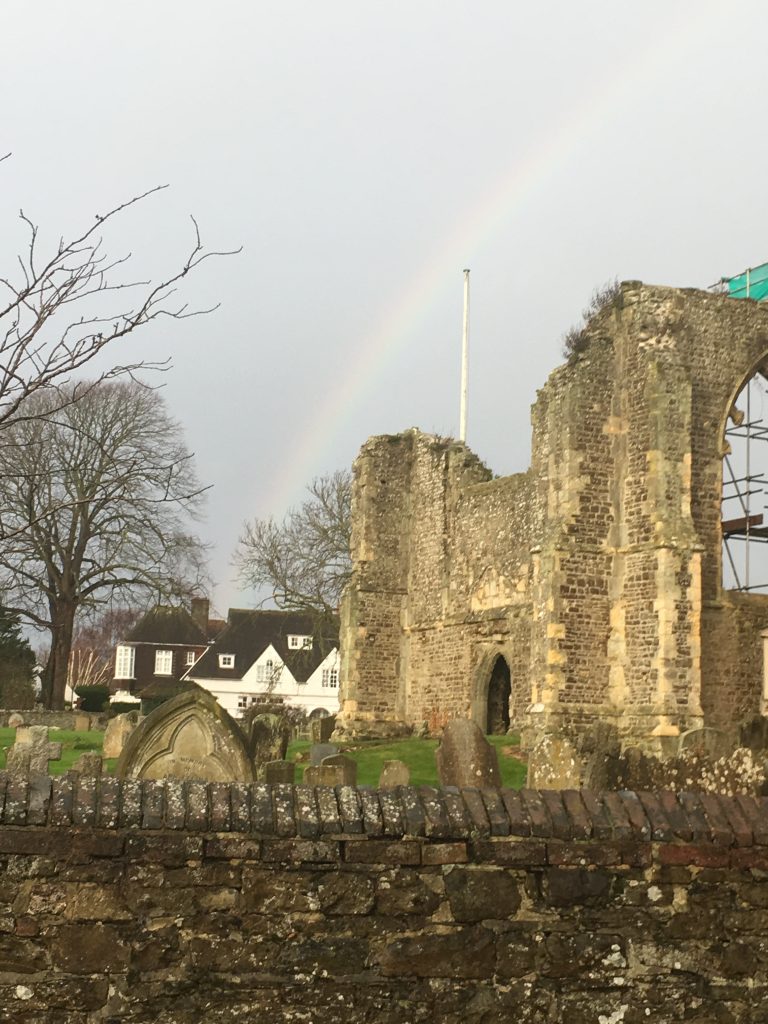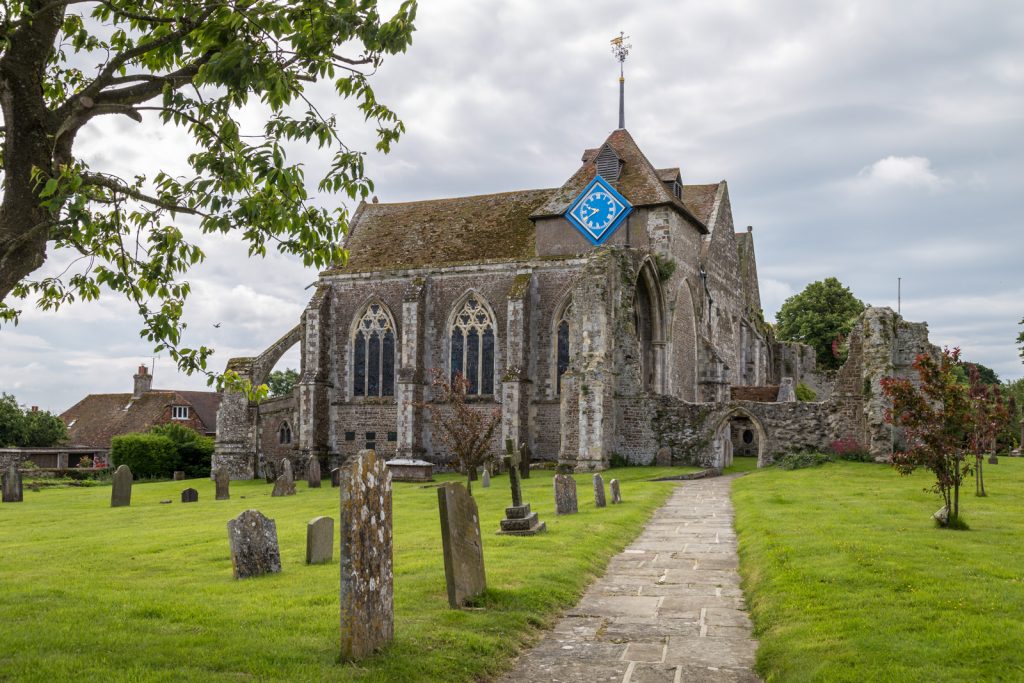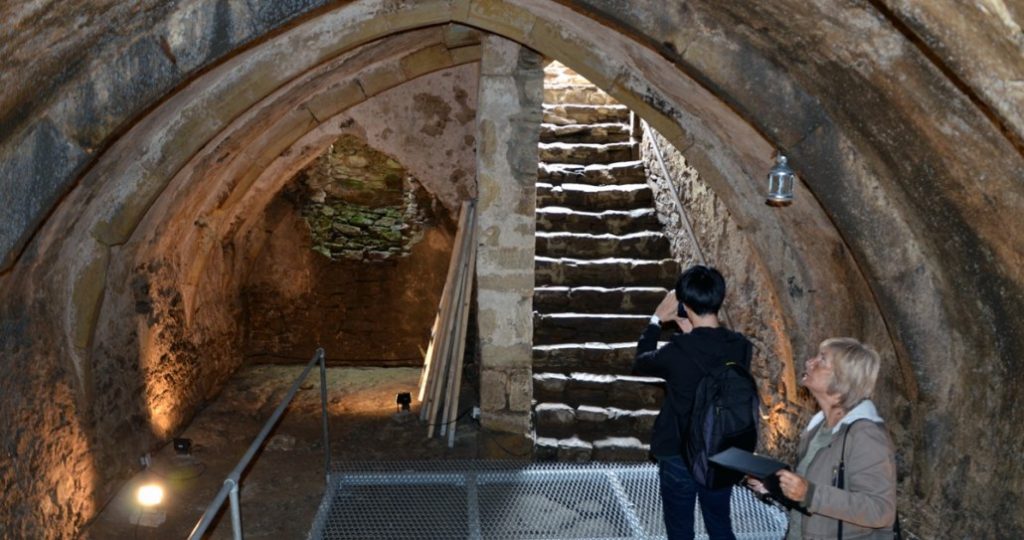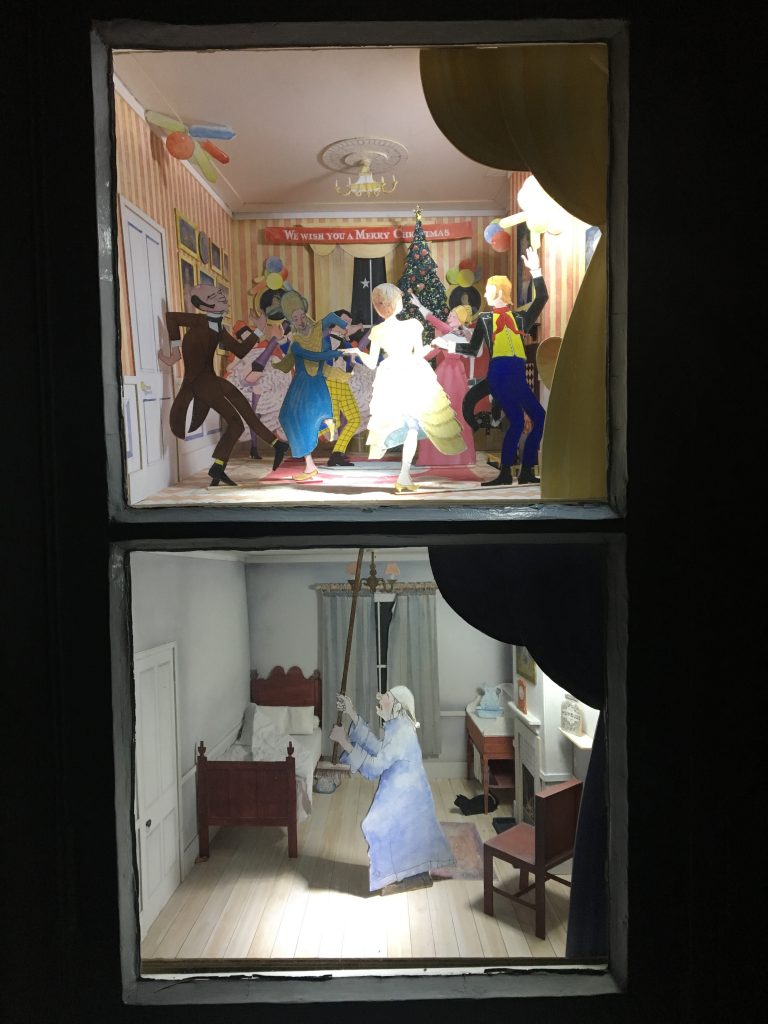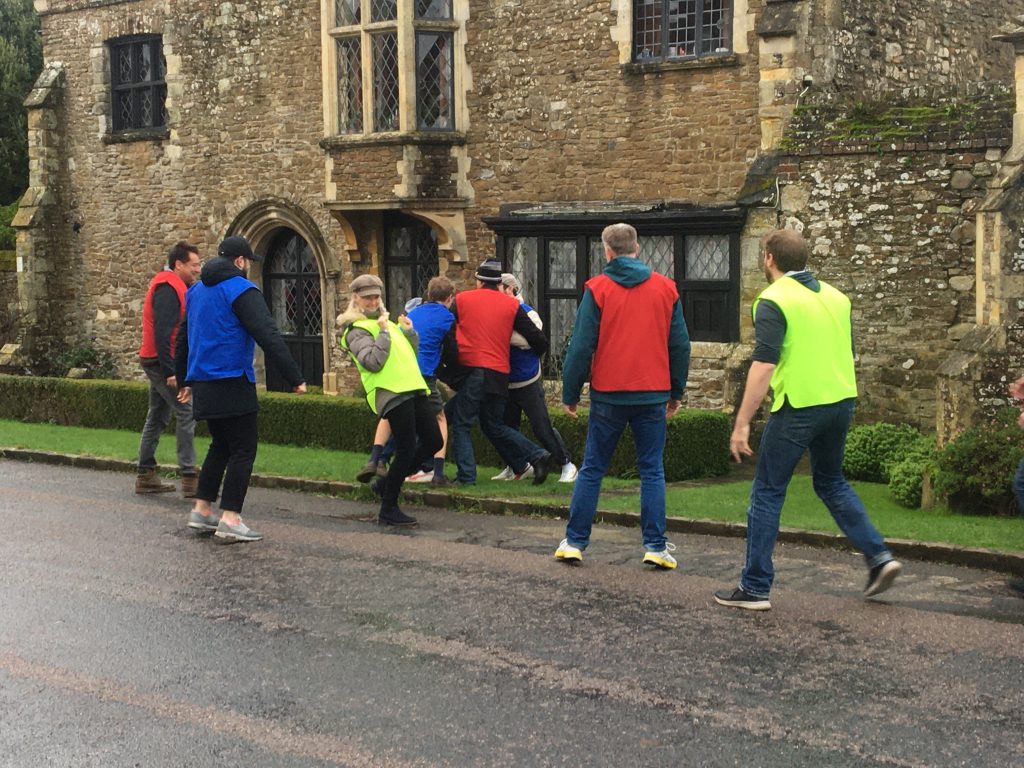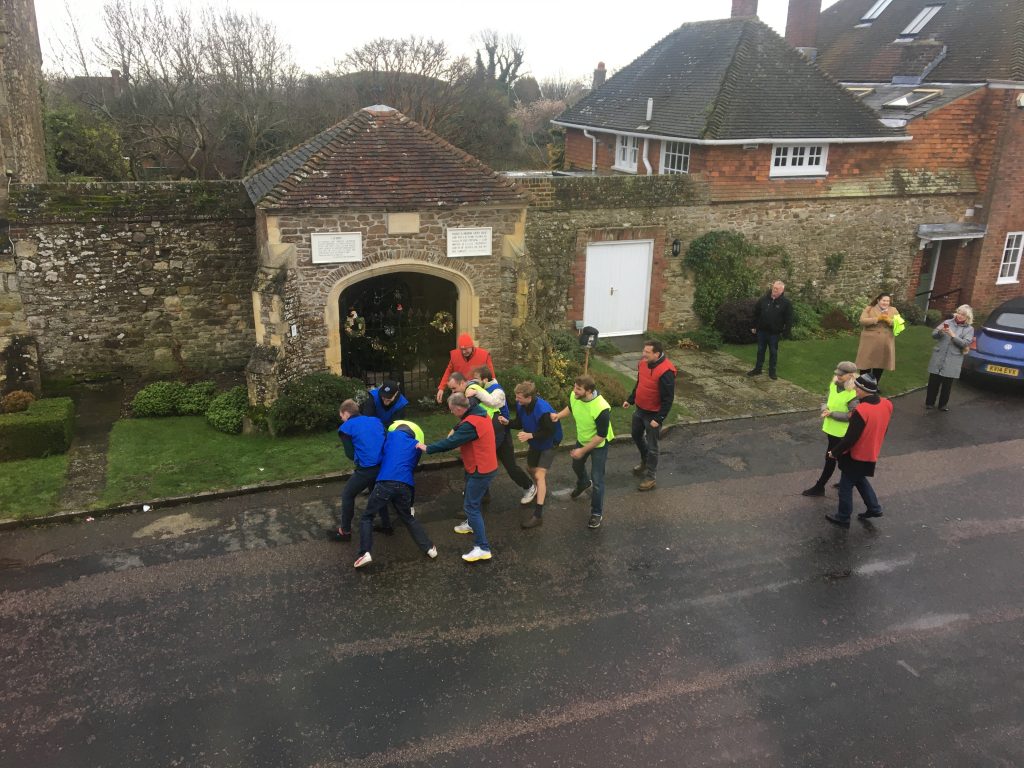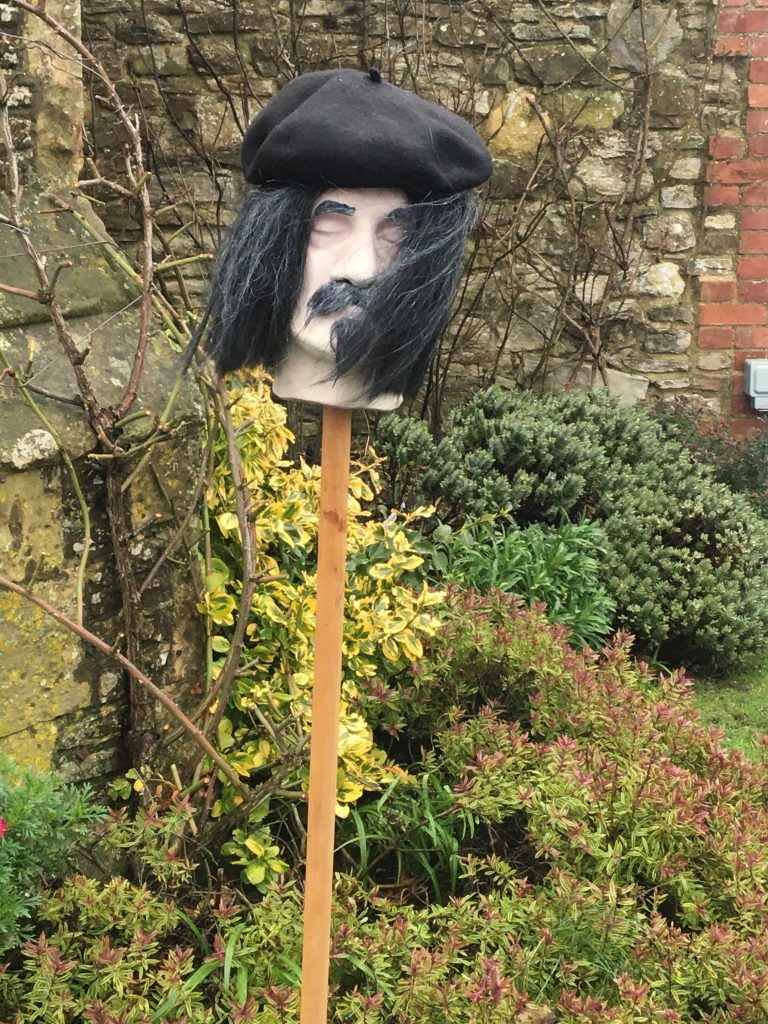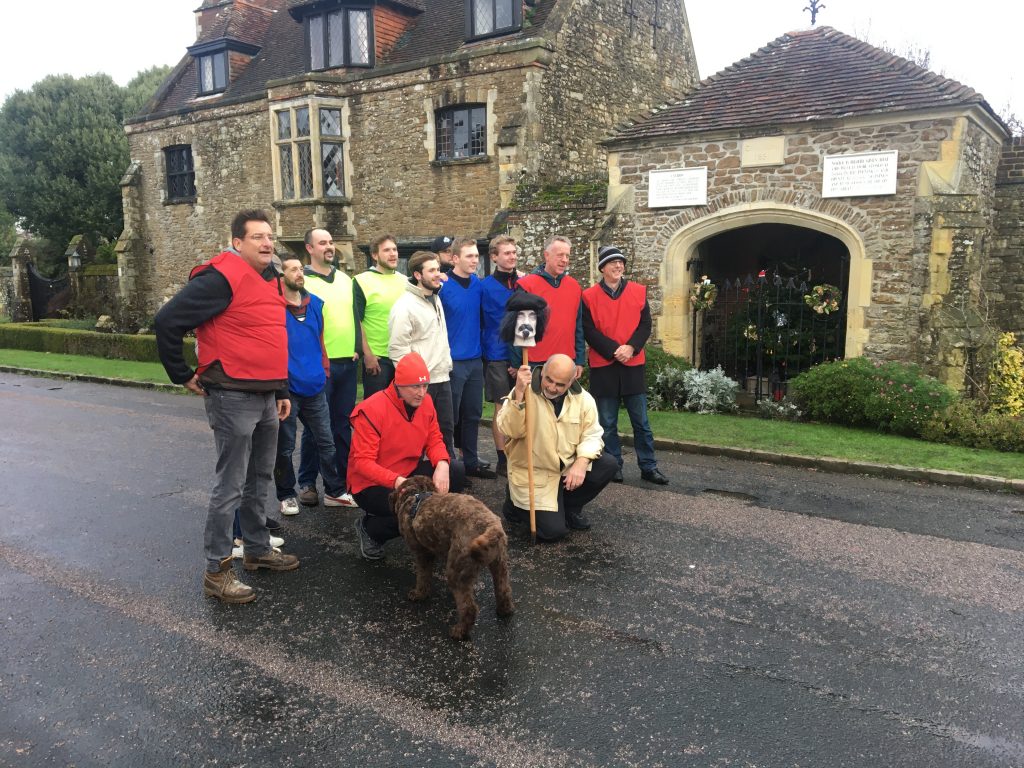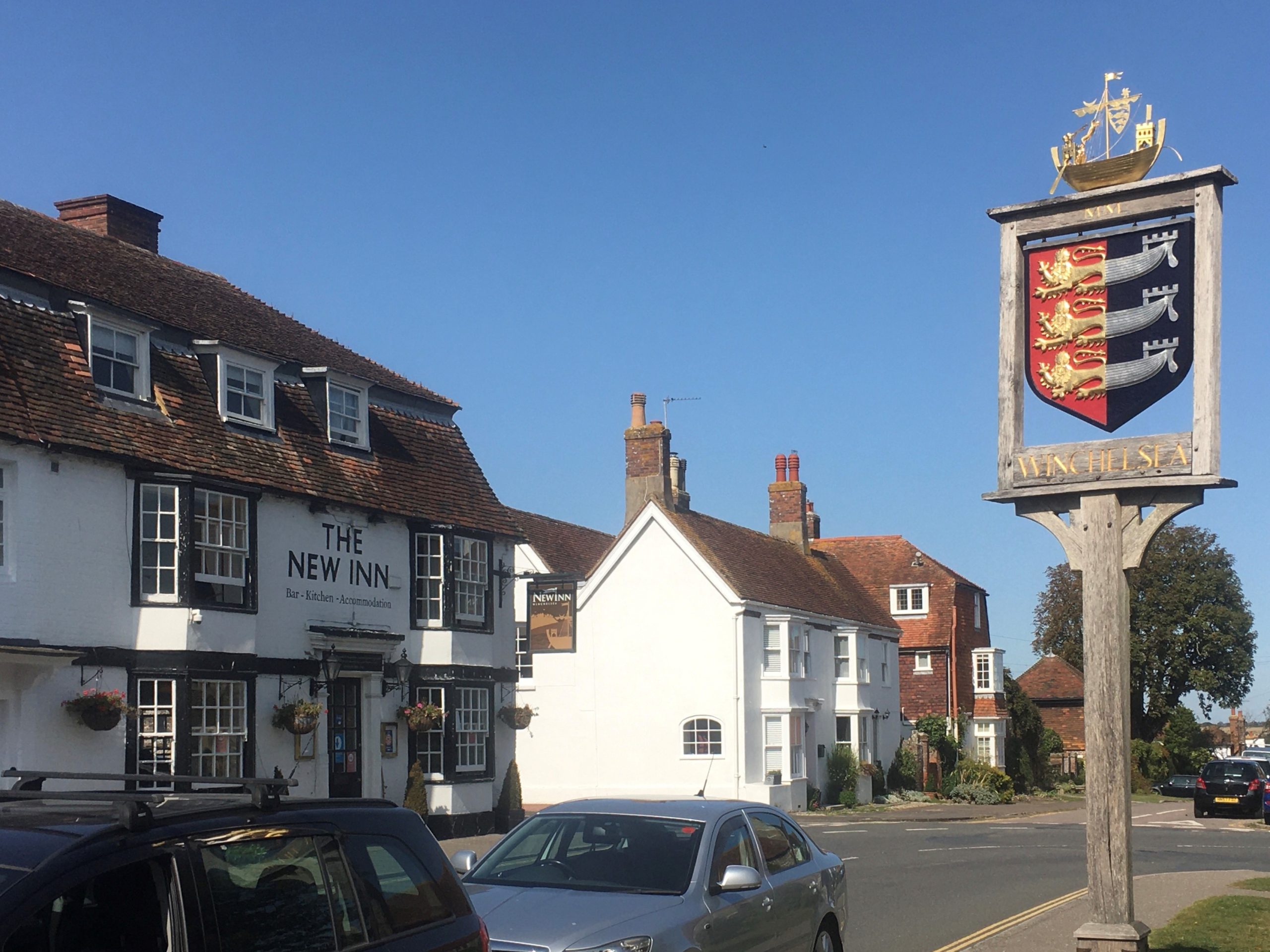
NOTE – this article was researched in 2019. While you can’t visit this year, we decided to publish so you can add to your to do list for when days out (odd or otherwise) are safe again!
Winchelsea offers battle scars, Christmas window displays, subterranean tours and a mysterious rough-and-tumble street game. Odo explains why Britain’s oldest new town remains a favourite Christmas visit.
664 years before Milton Keynes
The term ‘new town’ generally refers to those built and planned under the powers of the New Towns Act 1946 to relocate populations in poor or bombed-out housing following the Second World War.
Towns like Hemel Hempstead and Milton Keynes had a scientific approach to planning, with streets laid out in logical grids. Although Stevenage is often credited as being the first, we can go back 664 years for an earlier example. Britain’s oldest new town is, in fact, Winchelsea in East Sussex.
The sea, the sea
The history of Winchelsea is inextricably linked to the sea. The town grew rich on wealthy trade from across the Channel, but it also brought danger. Winchelsea was attacked several times by French raiders during the 100 Years war.
But above all else, the sea constantly re-drew the Sussex and Kent coastlines, eroding land in some places, and creating it anew in others.
The original Winchelsea was left in a parlous state in the thirteenth century as the shingle it was built on was gradually washed away. This was a problem as it was an important member of the Cinque ports which helped organise coastal defences against French invaders.
After petitioning from the town’s residents in 1281, King Edward I ordered a planned new town. Its streets were laid out in a grid and built on top of nearby Iham hill. As the old town of Winchelsea disappeared under the sea, the new town of Winchelsea emerged, its rigid layout giving today’s visitors a reminder of its ancient history.
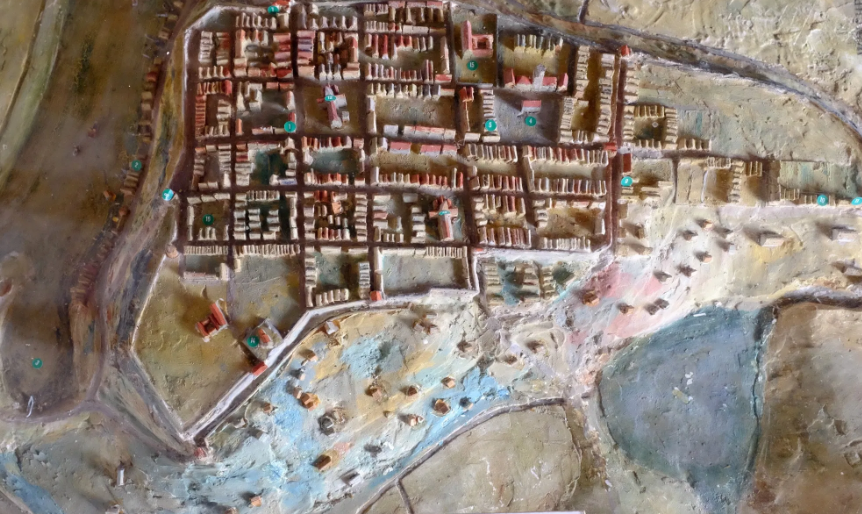
The faint lingering odour of a rotten borough
Some claim that Winchelsea is Britain’s smallest town, but Fordwich in East Kent has a better claim to this title. Winchelsea does have a stronger case to be the slightly less prestigious “country’s-smallest-town-with-a mayor-and-corporation”. This odd arrangement dates back to the town’s history as a “rotten borough”, when its two MPs were elected to Parliament by less than a dozen appointed “freemen”.
The system was open to the most flagrant abuse. For example, In 1624 John Finch was elected as one of the Winchelsea MPs when he managed to secure 8 votes. His vanquished opponent successfully petitioned for the result to be declared void due to “the gross partiality of the mayor.” Finch was re-elected a week later, when three voters changed sides, bringing his total to a commanding 11. Such undemocratic practices were eventually swept away by the 1832 Reform Act.
Today’s Mayor of Winchelsea is chosen annually from amongst the members of the corporation, who are still known as freemen. There is no vote for the wider population of Winchelsea. The freemen themselves are chosen by existing members of the corporation. Although the self-appointed Mayor and corporation have a largely ceremonial role, they still have responsibility for the maintenance of the town’s ancient monuments and the excellent local museum in the Court Hall.
St Thomas’ Church
The Church of St Thomas the Martyr still bears the scars of the French raiders. Four times in the fourteenth century, Winchelsea suffered severe damage as large raiding parties sacked the town. The damage to St Thomas’ visible today happened in 1380 when a French force invaded. Apparently the town was left unprotected because its men were on a similar mission attacking villages in northern France.
The churchyard of St Thomas is the final resting place of Spike Milligan who lived just outside Winchelsea in Udimore. The headstone bears the Gaelic inscription Dúirt mé leat go raibh mé breoite, which translates as I told you I was ill.
Just outside the churchyard, opposite the New Inn, is “Wesley’s Tree” where John Wesley, the founder of Methodism, preached the last of his grear open-air sermons in 1790.
Winchelsea underground
Any visitor to Winchelsea today cannot not help but be charmed by this picturesque hamlet full of beautiful old houses. Its wide straight streets, laid out in its grid pattern, offer wide-angle views along its leafy thoroughfares. Although a site of tranquillity today, with around 600 inhabitants, it was once a prosperous and busy port – a major hub for the medieval wine trade.
However, this prosperity did not last long. Once again, the sea intervened and the town fell into some decay in the fifteenth century after its tidal harbour on the River Brede silted up, ending its role in the wine trade. But reminders of this trade still exist.
Winchelsea’s medieval stone-vaulted cellars are justifiably famous. Street level visitors will see some of the entrances to theses subterranean marvels. But their scale and beautiful interiors can only be appreciated from within. Thirty three of the cellars can be visited through the excellent cellar tours led by enthusiastic volunteers. The tours take place between from April and October.
Christmas in Winchelsea
There can be few places in England better suited to spending Christmas than Winchelsea. Its relative remoteness provides jet-black night skies loaded with bright stars. It also has two distinct traditions which make it the ideal place to visit over the festive season.
The first is the Christmas window display. This is a world away from the gaudy bright lights of London’s Oxford Street. Windows in 27 homes are decorated with a Christmas theme by volunteers to help raise money for local charities. The first five windows – normally designed by children – open one a day in early December. The remaining windows all open in mid December and are lit up at every night until the end of the month. The workmanship of many of these windows is exquisite.
The infamous Winchelsea Street Game The Frenchman’s head
Every Boxing Day at 11:00am the normally tranquil Castle Street is transformed into an arena of gladiatorial conflict. The origins of the Winchelsea Street game – sometimes referred to as the Frenchman’s Head – are lost in the mists of time. It seems the game began hundreds of years ago, probably after one of the French raids on the town. You have to wonder if there are similar Englishman’s Head games played in northern France to mark raids by Winchelsea men. So worried were the local authorities by this violent and anarchic game, that they suppressed it for over 200 years, ‘lest it spread disorder and revolution throughout the land.’
The game was revived in the 1990s and it remains brutal and essentially lawless. Three teams take part and it begins with a decapitated Frenchman’s head being shown to the crowd. The object of the game is to place the head into a barrel at the end of the street. Aside from this, there are few if any rules. The game quickly turn into a gigantic scrum with occasional high-speed sprints and passes. The teams are interchangeable and seemingly anyone in the crowd can take part. After around 30 minutes the game is over for another year. The teams retreat to the New Inn to dress their wounds and regale everyone with their heroic tales from the battlefield.
Find out more
The excellent website maintained by the Corporation provides a wealth of information on the town’s history
The site also has details of the cellar tours and the town’s Christmas events including the Christmas windows.
Winchelsea.net is another site packed with information about the town and its events.
For more about the Winchelsea constituency in the seventeenth century visit the History of Parliament Trust’s website.
For more about St Thomas’ church click here.
Getting there
Winchelsea station is located at the bottom of the hill about a 10 minute walk (mainly uphill) from the town. Services run to Hastings Eastbourne and to Ashford international. The services run every two hours.
